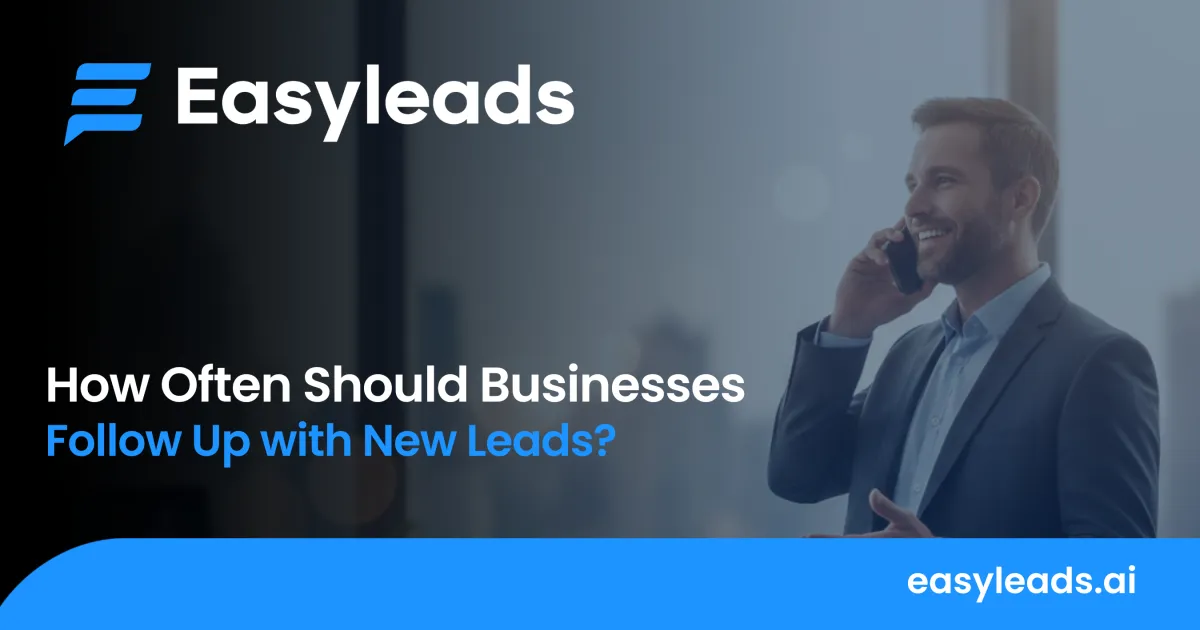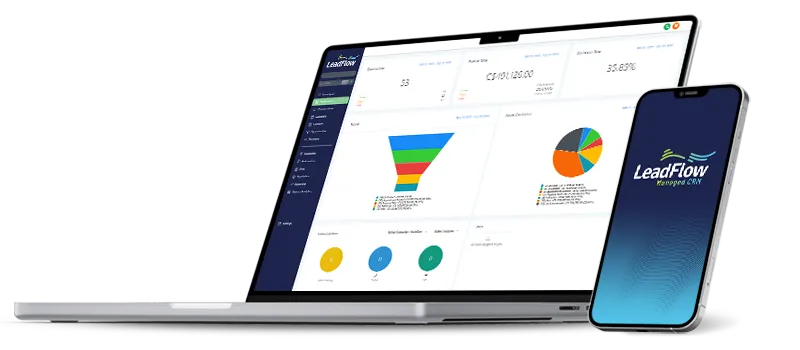Blog

How Often Should Businesses Follow Up with New Leads? A Strategic Guide to Lead Nurturing
Converting new leads into paying customers requires more than just making initial contact—you need a strategic approach to follow-up timing and frequency. For businesses looking to optimize their lead conversion rates, understanding the science behind effective follow-up schedules can make the difference between closing deals and losing potential customers to competitors.
The Critical First Hour Window
Research consistently shows that the first hour after lead generation represents the most crucial window for initial contact. Businesses responding to leads within the first hour are seven times more likely to qualify the lead compared to those who wait longer. This rapid response time demonstrates professionalism and captures prospects while their interest remains at peak levels.
The urgency stems from lead behaviour patterns. In the age of technology and automation, leads expect an almost instant response, or they move on. When prospects submit inquiries or download content, they’re typically comparing multiple options at the same time. The first business to respond often gains a significant advantage in the decision-making process. This reality makes automated response systems and notifications essential parts of any successful lead management strategy.
The Strategic Follow-Up Sequence
After the initial contact, implement a structured follow-up sequence rather than random outreach attempts. The most effective approach typically follows this pattern:
Days 1-3: High-Touch Period
During the first three days, prospects are the most engaged and receptive to communication. Plan two to three touchpoints during this window, using different communication channels to accommodate each lead’s preferences. The first follow-up should happen within 24 hours of initial contact, followed by additional outreach on day two or three.
Week 1-2: Consistent Engagement
In the second week, maintain momentum without overwhelming your prospects. Two follow-ups during this period work well—one at the end of week one and another during week two. These contacts should provide additional value, such as relevant case studies, industry insights, or answers to common questions.
Weeks 3-4: Persistence with Purpose
Many sales professionals abandon leads by this point. They’re missing opportunities with prospects who need longer decision-making periods. During weeks three and four, one follow-up per week keeps you top of mind while respecting your prospect's space. These communications should focus on addressing potential concerns or providing new information that might influence their decision.
Long-term Nurturing: Monthly Touchpoints
For leads that don't convert within the first month, transitioning to monthly follow-ups keeps relationships warm without being intrusive. This long-term approach recognizes that your business needs to change over time, and today's unqualified lead might become tomorrow's ideal customer.
Channel Diversification Strategy
Effective lead follow-up requires using multiple communication channels strategically. Successful businesses implement a multi-channel approach that maximizes reach while respecting prospects’ preferences.
• Email Communication: Serves as the primary channel for most businesses. Ideal for sharing detailed information, case studies, and educational content that prospects can review at their convenience
• Phone Calls: Most effective for urgent or high-value leads, allowing real-time conversation, immediate objection handling, and building personal connections that email cannot achieve
• Text Messages: Perfect for quick check-ins, appointment confirmations, and time-sensitive updates. Particularly effective with younger demographics who prefer mobile communication
• Social Media Connections: Helps maintain visibility through LinkedIn connections, Facebook engagement, and industry group participation, providing opportunities for informal relationship building
• Direct Mail: Reserved for high-value prospects, this traditional approach can cut through digital noise and create memorable impressions when executed thoughtfully
• Video Messages: Adds a personal touch to follow-ups. Allows for visual demonstrations, and helps prospects connect faces with names for stronger relationship building
The key lies in matching the communication channel to the prospect's preferences and the message's urgency. Initial outreach might begin with email, progress to phone calls for qualified leads, and incorporate text messages for scheduling purposes.
Quality Over Quantity Principle
While consistency matters, the quality of each follow-up significantly outweighs frequency. Each communication should provide genuine value rather than simply requesting a meeting or pushing for a sale. Valuable follow-ups might include industry reports, relevant case studies, answers to frequently asked questions, or insights into market trends that affect the prospect's business.
This value-first approach builds trust and positions your business as a helpful resource rather than another vendor seeking attention. Prospects respond more favourably to businesses that understand their challenges and offer solutions rather than being focused solely on closing deals.
Personalization and Context
Generic follow-up messages rarely produce strong results. Successful businesses customize their outreach based on lead source, industry, company size, and interests. A lead from a webinar about automation needs different follow-up content than someone who downloaded a pricing guide.
Maintaining detailed records of previous interactions ensures each follow-up builds upon earlier conversations. References to specific pain points discussed, questions asked, or materials shared demonstrate attention to detail and genuine interest in your prospect's success.
Technology-Enabled Consistency
Managing your follow-up schedules manually becomes challenging as the number of leads coming in grows. Modern CRM systems automate much of the follow-up process while maintaining personalization capabilities. These platforms can trigger emails based on specific timelines, remind sales teams they have to make a phone call, and track engagement across multiple channels.
Automation ensures no leads fall through cracks while freeing your sales team to focus on high-value activities like relationship building and deal closing. The most effective approach combines automated scheduling with human customization of messages and timing adjustments based on prospect responses.
Measuring and Optimizing Results
Effective lead follow-up doesn't have to be complicated, but it does require consistency and the right tools to support your efforts. The most successful businesses treat lead follow-up as both an art and a science, combining systematic approaches with the human touch and relationship-building skills.
The difference between businesses that convert leads effectively and those that struggle often comes down to having a system that actually works for them, not against them. When your CRM handles the timing, tracking, and automation, your team can focus on building relationships and closing deals.
If you're tired of leads slipping through the cracks or wondering whether your follow-up strategy is working, that's exactly why Easyleads exists. We've built a managed CRM that handles the complexity while keeping things simple for your team.
Want to see what consistent lead follow-up looks like when you have the right system backing you up? Book a quick demo, and we'll walk through how Easyleads can streamline your lead nurturing process with no pressure and no tech headaches.

Copyright Easyleads CRM 2023 - Privacy Policy - All Rights Reserved

